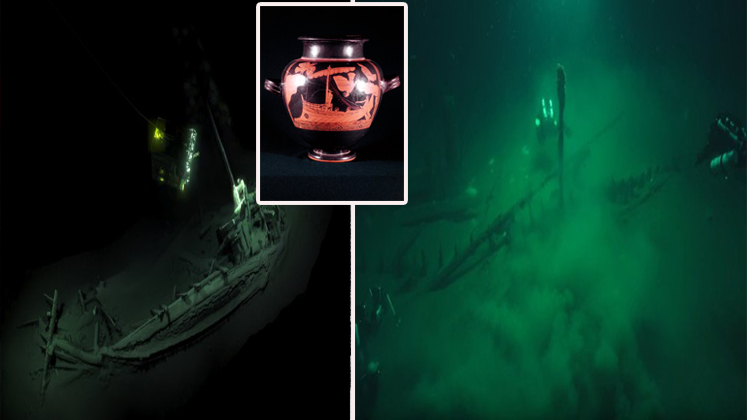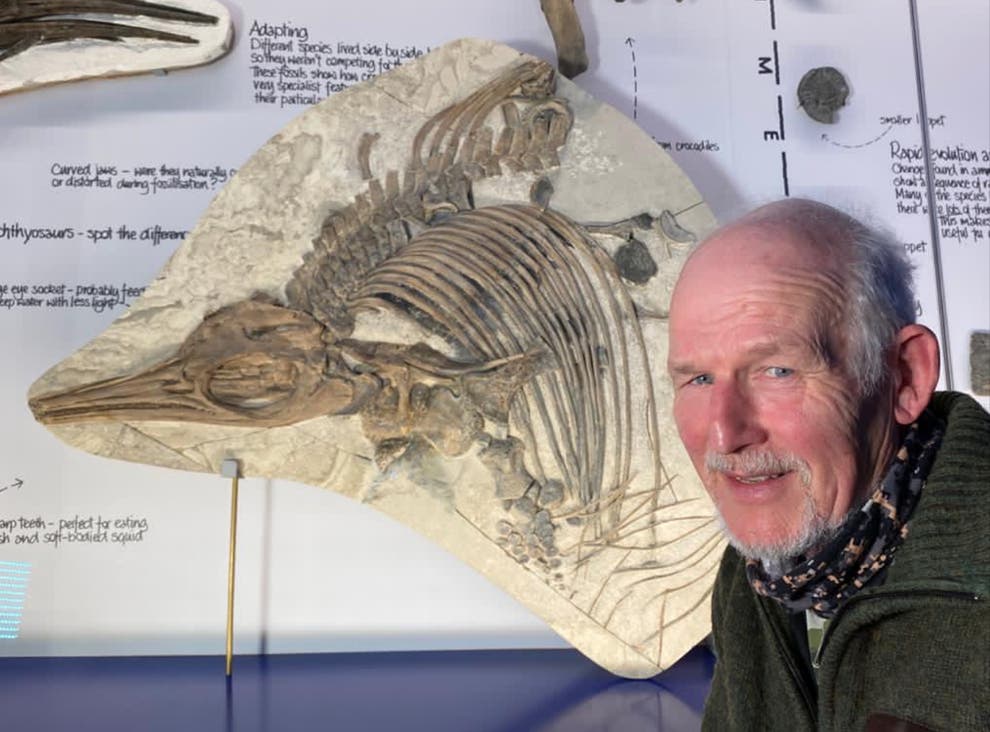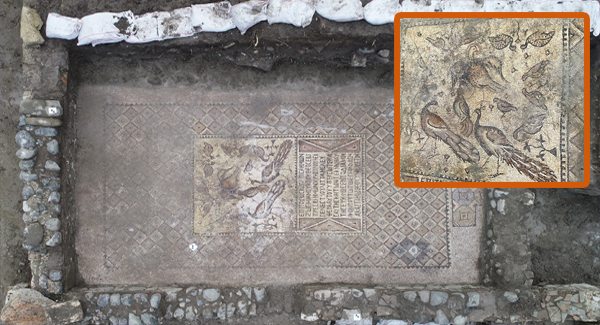Archaeologists have unveiled a series of extraordinary discoveries that challenge our understanding of human history and creativity. From ancient cave paintings beneath the sea to sprawling rock art complexes across the globe, these findings reveal the sophistication, symbolism, and environmental interplay of early human societies. Dated from 50,000 years ago to as recently as 700 CE, these artworks provide a window into the cognitive, cultural, and spiritual lives of our ancestors, prompting a reevaluation of humanity’s artistic and societal evolution.
Sea-Entranced Painted Cave, Spain
Nestled along Spain’s rugged Atlantic coast, the Sea-Entranced Painted Cave, dated to approximately 45,000 years ago, showcases the ingenuity of early humans in a naturally eroded coastal shelter. Formed by tidal action and marine erosion, the cave’s entrance lies beneath the waves, creating a stable microclimate that preserved its mineral pigments. Using iron oxide for deep reds and ochres, and charcoal for blacks, prehistoric artists mixed pigments with organic binders to ensure adhesion. Advanced techniques like scanning electron microscopy and laser ablation imaging reveal marine residues in the paint, suggesting the coastal environment influenced the artistic process.
The cave’s motifs, including dynamic human figures in ceremonial poses and ambiguous geometric patterns, suggest a complex iconographic system tied to spiritual rituals, fertility, or seasonal cycles. High-resolution imaging shows layered applications, indicating successive artists refined traditional symbols. The cave’s strategic coastal location highlights early humans’ use of natural shelters as both protection and canvases for cultural expression, challenging conventional timelines of artistic evolution.
Hall of Bulls, France
In southwestern France’s limestone caves, the Hall of Bulls stands as a pinnacle of Upper Paleolithic art, dated to around 20,000–15,000 years ago. Its enormous 5-meter-long bull, rendered in a “twisted perspective” technique—profile body with frontal horns—demonstrates an early grasp of three-dimensionality and optical illusion. Infrared reflectography confirms the artists scraped the rock surface for better pigment adhesion, using locally sourced iron oxide and charcoal mixed with natural binders like animal fat.
Digital mapping reveals the paintings’ placement aligns with natural illumination, suggesting their role in rituals enhanced by light. Combining dynamic animal portrayals with abstract geometric patterns, the Hall of Bulls likely served to assert group identity and connect humanity with nature. These sophisticated expressions challenge assumptions about prehistoric art as merely decorative, highlighting its symbolic and communicative roles.
Sealed Animal Kingdom, France
Near Vallon-Pont-d’Arc in southern France, the Sealed Animal Kingdom, preserved by a landslide for 36,000 years, offers pristine insights into Upper Paleolithic art. Discovered in 1994, the cave contains over 300 paintings of predators like lions, bears, and rhinoceroses, unlike the typical bison and deer of other sites. Radiometric dating and pigment analysis confirm the use of red ochre and charcoal with subtle shading to enhance dimensionality.
The landslide created a stable microclimate, minimizing microbial degradation, though recent exposure has caused some pigment alteration. The focus on formidable animals suggests an animistic worldview, with rituals possibly revering nature’s power. Interdisciplinary studies in archaeology, geochemistry, and climatology underscore the interplay between geological processes and creativity, expanding our understanding of Paleolithic cultural and ecological dynamics.
Cave of the Hands, Patagonia
In Argentina’s Santa Cruz Province, the Cave of the Hands (Cueva de las Manos), dated from 7,300 BCE to 700 CE, features intricate negative hand stencils and vivid animal depictions. Created by spraying pigment around hands pressed against the rock, these imprints offer a direct connection to their makers. Pigment analysis reveals iron oxides for reds and organic compounds for other hues, with layering indicating shifts in aesthetic or ritualistic functions over time.
The cave’s artwork, including guanacos and regional predators, interacts with natural contours and lighting, enhancing its symbolic value. Likely a gallery for communicating group identity or rituals, the site provides insights into the adaptive strategies of hunter-gatherer societies. Its preservation, aided by environmental stability, makes it a benchmark for studying early human cognition and artistic behavior.
Indonesia’s Ancient Narrative
In Indonesia, sites like Leang Karampuang, Leang Tedongnge, and Leang Bulu Sipong 4, dated to over 50,000 years, challenge the Eurocentric view of cave art’s origins. A painting at Leang Karampuang, dated to 51,200 years, depicts three stylized human-like figures around a 92 cm red pig, executed with careful attention to scale. Laser ablation U-series imaging confirms these ages, revealing Southeast Asia’s role in symbolic thought.
The recurring pig motif suggests cultural or spiritual significance, with controlled brush techniques and geometric arrangements indicating advanced artistic sensibility. These discoveries compel a reevaluation of global prehistoric art history, positioning Indonesia as a cradle of early symbolic behavior.
Amazon’s Rock Art Legacy
In Colombia’s Amazon, rock art spanning nearly 13 km of cliff faces, dated from the late Pleistocene to early Holocene, reveals a complex prehistoric narrative. Using iron oxide pigments mixed with plant resins and animal fats, artists depicted hunting scenes, ceremonial dances, and animals like deer, jaguars, and extinct megafauna. The strategic placement of imagery, aligned with natural light, suggests ritualistic purposes.
The art’s preservation in remote locations faces threats from humidity and erosion, but its diversity—combining realistic and abstract forms—implies roles in ritual communication and territorial marking. These sites redefine our understanding of symbolic expression in tropical environments, highlighting early Amazonian communities’ cultural complexity.
Mura Cave, Bulgaria
Northwestern Bulgaria’s Mura Cave, spanning 2.5 km, houses over 750 images dated across millennia. Rendered in iron oxide and manganese, the artworks—preserved by a stable 12°C microclimate—include anthropomorphic figures, zoomorphic depictions, and geometric patterns. Dynamic human poses and ritualistic motifs suggest representations of spirits or deities, while abstract designs may have served as numerical or calendrical markers.
Interdisciplinary research, including 3D scanning and ethnographic comparisons, reveals the cave’s role as a chronicle of early European cultural identity, reflecting prehistoric cognition and societal organization.
Serra da Capivara, Brazil
In Brazil’s Serra da Capivara National Park, dynamic hunting scenes dated 50,000–30,000 years ago depict hunters in mid-motion, rendered in iron oxide pigments. High-resolution imaging and laser ablation U-series dating confirm their age, while microscopic analyses reveal organic binders for durability. The kinetic imagery, with overlapping contours and directional lines, conveys the hunt’s energy and communal strategies.
Placed to leverage natural light, these scenes likely served as a visual language for practical and spiritual purposes, offering insights into early cognitive abilities and cultural ingenuity.
Laas Geel, Somaliland
In Somaliland, Laas Geel’s rock art, dated 11,000–5,000 years ago, depicts cattle in ceremonial robes, alongside dogs, giraffes, and antelopes. Using iron oxide and manganese pigments, the artworks, preserved by sheltered rock faces, suggest cattle’s dual role as sustenance and ritual symbols. Spatial organization and abstract patterns hint at seasonal or spiritual narratives, reflecting early pastoralists’ ecological awareness and cultural identity.
Tadrart Acacus, Libya
In Libya’s Sahara, Tadrart Acacus’s rock art, dated to 12,000 years, documents the region’s transformation from a lush environment to a desert. Early depictions of elephants and giraffes give way to cattle and mounted figures, reflecting pastoral adaptation. Pigments from local iron oxides and manganese, applied to abraded surfaces, show technical sophistication. The motifs’ placement, possibly tied to astronomical or seasonal events, underscores the interplay of art, environment, and spirituality.
A New Perspective on Human History
These discoveries, from Spain to Indonesia, the Amazon to the Sahara, reveal a global tapestry of prehistoric art that transcends mere decoration. Advanced techniques like laser ablation, spectral imaging, and 3D mapping have uncovered the technical mastery, environmental adaptation, and symbolic depth of early human societies. From ritualistic narratives to ecological awareness, these artworks challenge conventional timelines, suggesting that symbolic thought and cultural complexity emerged earlier and more diversely than previously thought. As research continues, these sites inspire awe and curiosity, urging us to rethink humanity’s creative and cognitive origins.






















